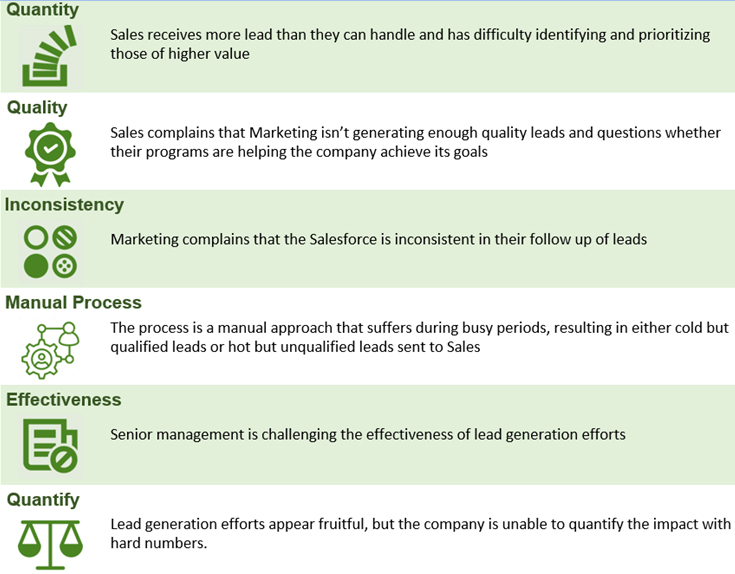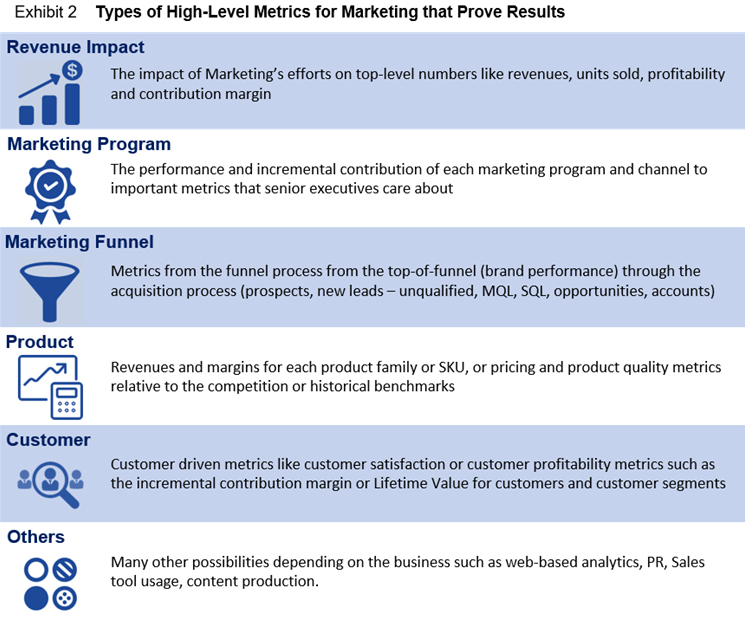Lead Management
Section 2–Symptoms of a Broken Process
By David Bartenwerfer
Lead Management as a field of endeavor doesn’t garner much in the way of headlines, even though few business processes are as critical—or as broken. According to recent studies, between 70 and 80 percent of generated leads are never acted upon by customer facing channels and thus are needlessly wasted. Best practices in Lead Management call for immediate action on all leads, with high potential leads directed to high value (and high cost) organizations like Sales and leads with lower potential (or those lacking urgency) routed to more cost-effective channels. By maximizing the potential of each lead, companies can simultaneously increase their return on investment of marketing initiatives ANDimprove the productivity of their Sales Force.
SYMPTOMS OF A BROKEN PROCESS
To thrive, companies must continuously grow their customer base. Understanding the customer buying cycle (or journey) is an imperative first step to developing cost-effective Lead Management protocols. A potential customer transitions through several stages when contemplating a purchase, from problem identification, evaluation of options, purchase, and beyond—with each stage calling for a slightly different lead management strategy.
However, many companies compile lead information in individual lead lists based on the source (e.g., one list for each trade show) without mention of urgency or other strengths and weaknesses, perhaps organized by geography, and then forward each list directly to Sales. The problem with this approach is that a great majority of leads are at a stage in their purchase cycle where they aren’t ready to purchase immediately and could be better addressed by alternate channels. Treating all leads equally puts non-purchase-ready leads into the hands of Sales and may actually have a negative effect. Sales will call the prospect and drive a discussion around budget, purchase authority or timing; but these questions are inappropriate for leads in the information gathering stage—a ‘cold’ lead—and can sour the prospect.
The scenario above is an example of why Sales often has the general impression that many Marketing-generated leads are of limited value. Sales is compensated for closing, so a cold lead is of little use to them. The result is that Sales ignores up to 80% of all Marketing-generated leads. However, studies show that as many as 70% of leads will eventually make a purchase. Therefore, any valid lead, regardless of purchase timeframe, should not be discarded outright, thus improving Lead Management can have substantial benefits at only minimal incremental cost. In order to determine if a Lead Management process is broken, review the symptoms below that distinguish bottom from top quartile performers in Lead Management:

OPTIMIZATION DEFINED
Optimization is a methodology for calculating the best possible utilization of resources (people, equipment, time, supplies, capacity, etc.) needed to achieve the greatest possible result, such as minimizing cost or process time, or maximizing throughput, service levels, or profits. Optimizing Lead Management requires a holistic look at all leads and identifies the potential for each, given the best information available, and routes the lead to the most cost-effective channel that can maximize the lead’s value.
Link to the next article in the sequence: Lead Management 3.0 – Defining a Lead Strategy
Author
David Bartenwerfer is the founder and principal of Quantum Consulting and Technology. QuantumCT helps product and marketing organizations get smarter and prove, predict and optimize impact and ROI with economic and financial modeling that employs customizable algorithms and technology leading to fast and lasting insight and action. Mr. Bartenwerfer has over twenty years’ experience in the High Tech, Internet, Telecom, Media, Financial Services and Retail industries and holds a B.S. in Systems Engineering with minors in applied mathematics and economics from the University of Virginia and an M.B.A. from the Stanford Graduate School of Business. For further information, contact the author at davidbartenwerfer@quantumct.com.
